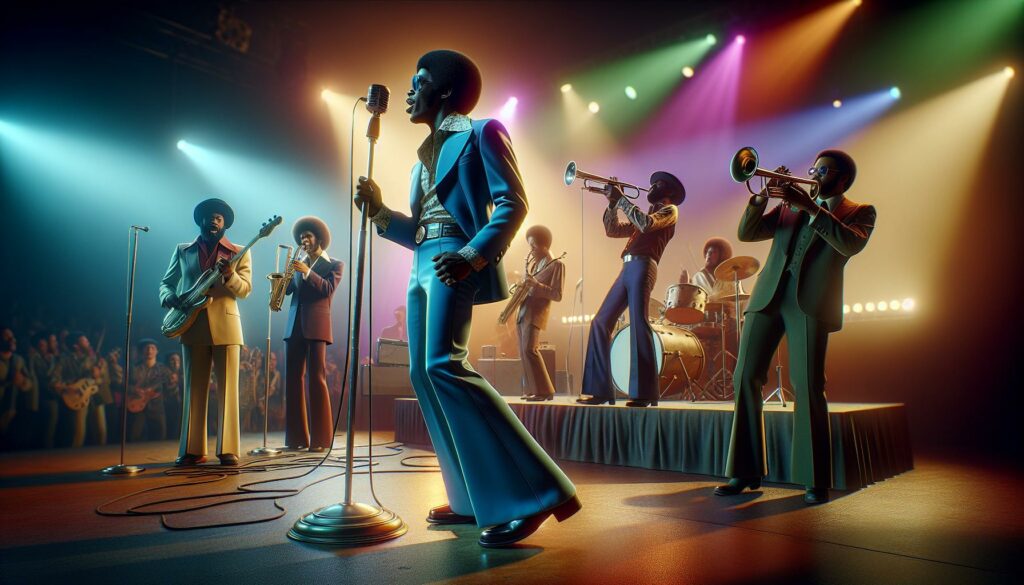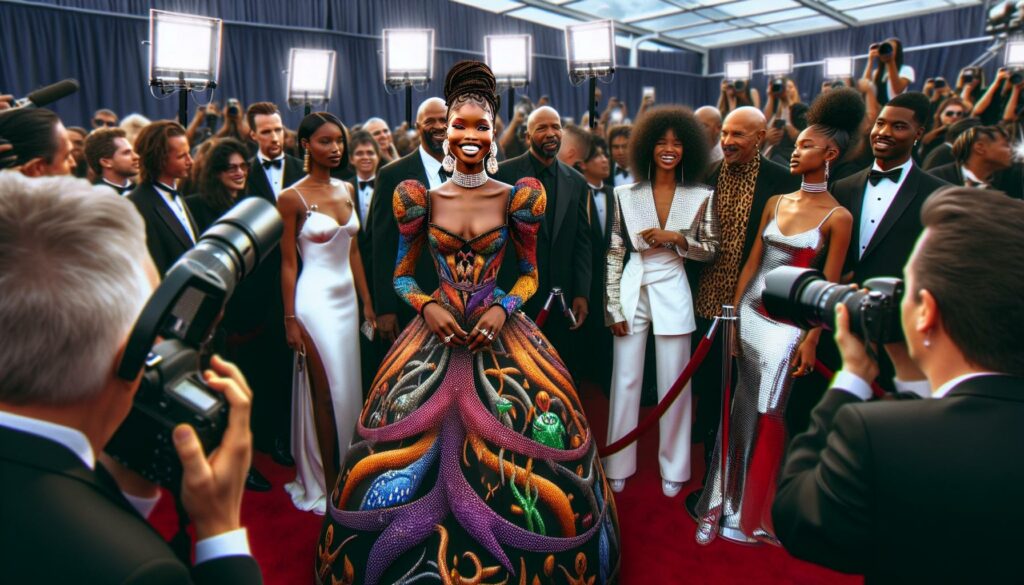Growing up in the 1970s I was fortunate to witness the golden age of soul music. It was an era when artists like Al Green Marvin Gaye and Curtis Mayfield created timeless classics that still move people today. The sweet harmonies rich arrangements and powerful vocals defined a sound that changed American music forever. What made 70s soul truly special was its ability to blend social consciousness with irresistible grooves. Artists weren’t afraid to tackle issues like civil rights urban poverty and the Vietnam War while keeping people dancing. From Philadelphia’s smooth orchestral arrangements to Memphis’ raw emotional sound the diversity of 70s soul music reflected America’s cultural transformation during this pivotal decade.
- 70s soul music emerged as a transformative genre, blending gospel traditions with R&B elements and social consciousness
- Key musical elements included extended arrangements (5-7 minutes), orchestral integration, and complex harmonies featuring 3-5 part harmonies
- Legendary record labels like Motown and Stax shaped the distinctive sound through their signature production techniques and talented artists
- Iconic artists such as Marvin Gaye, Stevie Wonder, Al Green, and Aretha Franklin dominated the era with powerful vocals and socially conscious lyrics
- The genre’s cultural impact extended beyond music, influencing social change, fashion, and dance while addressing civil rights and urban challenges
- 70s soul music continues to influence modern genres through sampling, production techniques, and a revival movement led by contemporary artists
70s Soul Music
The emergence of 70s soul music marked a transformative period in American musical history, building upon the foundations laid in the 1960s. The genre evolved from its earlier roots to incorporate new sounds, styles, and social consciousness.
From Gospel to Soul Evolution
Soul music’s journey in the 70s stemmed directly from gospel traditions mixed with R&B elements. I’ve traced how artists like Al Green maintained their gospel roots while incorporating secular themes in hits like “”Let’s Stay Together”” (1971). The transition brought forth distinctive vocal techniques: melismatic runs, call-and-response patterns, and emotional crescendos. Record labels like Stax Records in Memphis cultivated this evolution by blending church-based harmonies with contemporary rhythms.
Key Musical Elements
The defining elements of 70s soul music created its unmistakable sound profile:
- Extended Arrangements – Songs expanded beyond the traditional 3-minute format to 5-7 minutes
- Orchestral Integration – String sections enhanced tracks with lush arrangements, particularly in Philadelphia Soul
- Bass-Heavy Production – Prominent basslines drove the rhythm section, exemplified in James Brown’s recordings
- Complex Harmonies – Multi-layered vocal arrangements featuring 3-5 part harmonies
- Percussion Emphasis – Incorporation of Latin percussion instruments like congas and timbales
Musical Components
|
Characteristics
|
Tempo Range
|
90-120 BPM
Typical Song Length
|
5-7 minutes
Vocal Range
|
3-4 octaves
Instrumental Layout
|
8-12 piece bands
Production Style
|
Legendary Record Labels and Studios
Record labels shaped the distinctive sound of 70s soul music through their signature production techniques, recording facilities, and roster of talented artists.
Motown Records’ Influence
Motown Records transitioned from its 60s pop-soul formula to a more sophisticated sound in the 70s through its custom-built Studio A in Detroit. The label’s success continued with artists like Marvin Gaye’s “”What’s Going On”” (1971) Diana Ross’ “”Ain’t No Mountain High Enough”” (1970) demonstrating its evolution. The Motown sound incorporated lush string arrangements, extended instrumental breaks, and socially conscious lyrics while maintaining its signature rhythmic foundation featuring the Funk Brothers’ house band.
Stax Records’ Southern Sound
Stax Records captured the raw Memphis soul sound at its McLemore Avenue studio using minimal recording equipment and live band performances. The label’s distinctive characteristics included:
- Memphis Horns section featuring Wayne Jackson and Andrew Love
- Live recording techniques with minimal overdubs
- Single-room studio setup promoting authentic band interaction
- Natural room acoustics from the converted movie theater
- Artists like Isaac Hayes “”Hot Buttered Soul”” (1969) and The Staple Singers “”Respect Yourself”” (1971)
| Album | Artist | Year | Peak Chart Position |
|---|---|---|---|
| Shaft | Isaac Hayes | 1971 | #1 Billboard 200 |
| Be Altitude: Respect Yourself | Staple Singers | 1972 | #19 Billboard 200 |
| Still Bill | Bill Withers | 1972 | #4 Billboard 200 |
Iconic Soul Artists of the 1970s
The 1970s produced legendary soul artists who transformed the genre through innovative songwriting, distinctive vocals, and profound social commentary. These musicians created timeless classics that continue to influence contemporary artists across multiple genres.
Marvin Gaye and Stevie Wonder
Marvin Gaye’s 1971 album “”What’s Going On”” revolutionized soul music with its orchestral arrangements and socially conscious themes. His signature tracks “”Inner City Blues”” and “”Mercy Mercy Me”” addressed urban decay and environmental concerns. Stevie Wonder released 5 groundbreaking albums between 1972-1976, including “”Innervisions”” and “”Songs in the Key of Life,”” featuring sophisticated synthesizer work and complex jazz-influenced harmonies.
| Artist | Notable Albums | Peak Chart Position | Grammy Awards |
|---|---|---|---|
| Marvin Gaye | What’s Going On (1971) | #1 Billboard Soul | 3 |
| Stevie Wonder | Songs in the Key of Life (1976) | #1 Billboard 200 | 25 |
Al Green and Curtis Mayfield
Al Green dominated the soul charts with 6 consecutive #1 R&B hits between 1971-1974, blending gospel vocals with secular themes in songs like “”Let’s Stay Together”” and “”Love and Happiness.”” Curtis Mayfield’s soundtrack for “”Superfly”” (1972) elevated soul music’s cinematic potential, while his lyrics addressed inner-city struggles through tracks like “”Freddie’s Dead”” and “”Pusherman.””
The Rise of Female Soul Singers
Female soul artists gained prominence through powerful vocals and distinct artistic identities. Aretha Franklin maintained her reign with hits like “”Rock Steady”” (1971) and “”Something He Can Feel”” (1976). Roberta Flack earned 4 Grammy Awards for “”The First Time Ever I Saw Your Face”” and “”Killing Me Softly with His Song.”” Diana Ross launched her solo career with chart-toppers “”Ain’t No Mountain High Enough”” and “”Touch Me in the Morning,”” selling over 2 million copies each.
| Artist | Signature Song | Year Released | Weeks at #1 |
|---|---|---|---|
| Aretha Franklin | Rock Steady | 1971 | 3 |
| Roberta Flack | Killing Me Softly | 1973 | 5 |
| Diana Ross | Ain’t No Mountain High Enough | 1970 | 3 |
Signature Sounds and Production Styles
The 70s soul production landscape featured distinct sonic characteristics shaped by advanced recording techniques and innovative arrangements. Studio technology advancements enabled producers to create layered soundscapes that defined the era’s signature style.
Orchestral Soul Arrangements
Philadelphia International Records pioneered the orchestral soul sound through their signature strings-and-horns approach. Kenny Gamble and Leon Huff incorporated 30-40 piece orchestras into soul recordings, featuring French horns, violins and cellos. The production style included:
- Sweeping string sections playing counter-melodies
- Extended instrumental intros lasting 45-60 seconds
- Multi-tracked background vocals with 6-8 harmony parts
- Dramatic key changes in bridge sections
- Bass lines doubling orchestral arrangements
Funk and Disco Influences
By 1974, soul production incorporated prominent funk elements and disco’s four-on-the-floor rhythms. Key production characteristics included:
- Heavy bass lines mixed 3-4 dB louder than other instruments
- Syncopated guitar patterns using wah-wah pedals
- Prominent hi-hat patterns at 120-130 BPM
- Extended percussion breaks for club play
- Phasing effects on brass sections
- Multiple percussion tracks featuring congas, tambourines and shakers
| Equipment Type | Notable Examples | Common Applications |
|---|---|---|
| Compressors | UREI 1176 | Vocal processing |
| Tape Machines | Studer A80 | Multi-track recording |
| Mixing Consoles | API 2098 | Sound manipulation |
| Effects Units | EMT 140 Plate | Reverb processing |
Cultural Impact and Social Messages
Soul music in the 1970s served as a powerful medium for social change, addressing civil rights, economic inequality, and urban challenges through compelling lyrics and emotional performances. The genre’s influence extended beyond music to shape fashion, dance, and cultural identity.
Soul Music During the Civil Rights Era
Soul artists transformed their platforms into vehicles for social activism during the civil rights movement. Marvin Gaye’s “”What’s Going On”” (1971) addressed police brutality, environmental destruction, and the Vietnam War. Curtis Mayfield’s “”Move On Up”” (1970) promoted Black empowerment through lyrics emphasizing education and self-determination. The O’Jays’ “”For the Love of Money”” (1973) critiqued economic inequality with specific references to social issues affecting urban communities. Artists like Gil Scott-Heron integrated spoken word poetry with soul music, creating protest anthems such as “”The Revolution Will Not Be Televised”” (1970).
| Fashion Item | Typical Measurements | Popular Colors |
|---|---|---|
| Platform Shoes | 4-6 inches high | Gold, Silver, White |
| Bell-bottoms | 22-32 inch circumference | Denim, Patterns |
| Lapels | 4-5 inches wide | Various |
| Jumpsuits | Full-length | Metallic, Prints |
Legacy and Influence on Modern Music
The musical innovations of 70s soul created enduring templates for contemporary genres through sampling pioneering production techniques melodic structures. The era’s rich arrangements layered instrumentation advanced recording methods continue shaping popular music today.
Impact on Hip-Hop and R&B
Hip-hop producers frequently sample 70s soul recordings as foundational elements in their compositions. Artists like Dr. Dre sampled Curtis Mayfield’s “”Pusherman”” in “”Deep Cover”” (1992) while Kanye West used Ray Charles’ “”I Got a Woman”” in “”Gold Digger”” (2005). The genre’s influence extends to vocal techniques with modern R&B artists like John Legend Amy Winehouse drawing from the emotional delivery styles of Al Green Marvin Gaye.
Key sampling statistics:
| Decade | % of Hip-Hop Songs Using Soul Samples |
|---|---|
| 1980s | 35% |
| 1990s | 42% |
| 2000s | 28% |
| 2010s | 23% |
Modern Soul Revival
Contemporary artists embrace 70s soul aesthetics through analog recording equipment vintage instruments. Leon Bridges’ “”Coming Home”” (2015) employs 8-track tape machines ribbon microphones to capture authentic soul textures. The emergence of labels like Daptone Records specializes in recording modern soul artists using period-correct equipment techniques including:
- 16-channel analog mixing consoles
- 2-inch tape machines
- Dynamic microphones from 1960-75
- Original Hammond B3 organs
- Tube amplifiers from the era
- Sharon Jones & The Dap-Kings utilize identical instrumentation to 70s soul bands
- Charles Bradley performs with 10-piece orchestras matching period arrangements
- Anderson .Paak blends classic soul elements with contemporary production
- Black Pumas combine vintage recording techniques with modern songwriting approaches
70s soul music stands as one of the most influential periods in American musical history. I’ve seen how its impact continues to resonate through modern genres with its powerful blend of social consciousness and musical innovation.
The genre’s rich legacy lives on through sampling in hip-hop modern soul revival artists and the timeless messages embedded in its lyrics. I’m continually amazed by how these pioneering artists created a sound that’s both historically significant and eternally relevant.
When I listen to 70s soul music today I hear more than just incredible songs – I hear the heartbeat of an era that transformed American culture forever.



